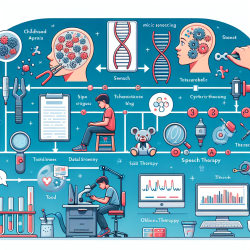Introduction
Gun violence continues to be a significant challenge, particularly in communities of color. The recent study titled “We know what’s going on in our community”: A qualitative analysis identifying community assets that deter gun violence offers valuable insights into how community assets can be harnessed to mitigate this issue. This blog explores the study's findings and how practitioners can implement these insights to improve their skills and community outcomes.
Understanding Community Assets
The study conducted in New Haven, Connecticut, utilized in-depth interviews to identify community assets that deter gun violence. These assets were categorized into three levels: interpersonal, neighborhood, and organizational. The findings emphasize the importance of role models, social cohesion, and community-based organizations in preventing gun violence.
Role Models: Influencing Positive Change
Role models play a critical role in shaping the behavior of youth in communities. The study highlights how individuals who have overcome similar challenges can positively influence young people. Practitioners can leverage this by identifying and supporting role models within the community to mentor and guide youth, offering them alternatives to violence.
Social Cohesion: Building Stronger Neighborhoods
Social cohesion within neighborhoods is another vital asset. The study found that communities with strong social ties and activities experienced lower levels of gun violence. Practitioners should encourage neighborhood events and initiatives that foster a sense of belonging and mutual support among residents. This can include community cookouts, block parties, and neighborhood watch programs.
Community-Based Organizations: Providing Resources and Support
Organizations within the community, such as schools, churches, and youth clubs, are instrumental in providing safe spaces and resources for young people. The study suggests that investing in these organizations can reduce the likelihood of youth engaging in gun violence. Practitioners should advocate for funding and support for these organizations to expand their reach and impact.
Mental Health: Addressing Trauma and Support Needs
The study also underscores the importance of accessible mental health services. Addressing trauma and providing support can prevent individuals from resorting to violence. Practitioners should work to reduce stigma around mental health and promote the availability of these services within the community.
Encouraging Further Research
While the study provides valuable insights, it also highlights the need for further research into community-led solutions to gun violence. Practitioners are encouraged to engage with local communities to identify unique assets and tailor interventions accordingly. Collaboration with researchers can help develop evidence-based strategies that are effective and sustainable.
Conclusion
By focusing on community assets such as role models, social cohesion, and organizational support, practitioners can play a pivotal role in reducing gun violence. Investing in these areas not only addresses the root causes of violence but also empowers communities to take charge of their safety and well-being. To read the original research paper, please follow this link: “We know what’s going on in our community”: A qualitative analysis identifying community assets that deter gun violence.










